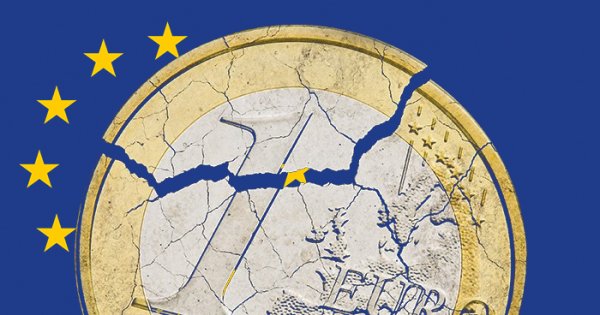
The ideal response to all too many questions is “Sure, that’s possible, but are you sure you want to?” Getting that all too visible tattoo that will annoy the parents. Deciding, when asked for the first time in life what you’d like to eat, that ice cream and rice sounds good. Don’t worry, every three year old has done that on the basis that both are nice — it’s part of life’s rich tapestry to find out that combinations are not necessarily the sum of their parts. Or there’s this idea that lots of people should have the same currency so that they have more economic power.
That last thought is rather more life damaging than the other two common developmental events. Despite that, the urge never quite does leave the more political: “Experts think a unified currency could be the answer, but due to several economic and political reasons, including a trust deficit among the countries of this region, South Asian countries are not able to use a common currency.”
As this newspaper went on to report, Prof Rehman Sobhan, chairman of the Centre for Policy Dialogue (CPD), said: “By ensuring free cross-border trade among South Asian countries, there is a huge opportunity to ensure the economic prosperity of the region. However, the lack of mutual trust in the free trade flow within the region is preventing that opportunity.”
Now, I know that the speaker mentioned is the father of the editor of this newspaper. So this is with love rather than in opposition. The first statement is wrong, the second is clearly and obviously correct. More trade is a good idea — freer trade would therefore be a good idea. And yes, everybody trusting each other would also be a good thing and not just for trade reasons. A unified currency might be something to be thought about — but it will be the result of that greater free trade, not something that might cause it.
The background economics here is about optimal currency areas. Those who want to get into the details can search for Alesina, or better Mundell, on that phrase. For the rest of us — if everyone in Dhaka used their own currency, then trade in the capital city would be pretty difficult. We’re pretty sure that everyone using the same currency leads to more trade at the level of one city. But it’s also true that the use of the same currency means everyone must have the same monetary policy. Base interest rates must be the same, for example.
So, if we have the one currency that covers South Asia then Bangladesh, India, Pakistan, Sri Lanka, must have the same interest rates, same rate of money supply growth — the same monetary policy. And if we mean a wider South Asia then that’s true of Myanmar, Vietnam, Malaysia and so on — how far do we want to go here?
And here’s the thing. We know — absolutely — that at some level of scale the same monetary policy doesn’t work. A thriving and growing economy like Bangladesh needs different monetary policies than does the troubled likes of Sri Lanka or a basket case like Myanmar or Cambodia.
What will surprise is how small that correct — or “optimal” — area can be. It’s long been a standard observation that the North of England will do better at a lower interest rate than what suits the South.
We’ve also the disaster of the euro to consider. Across the euro area the monetary policy is set for the median economic weight of the area. Obviously that is so. But back in 2002, and so on, that meant that interest rates were low to suit Germany’s economic problems. This set off those vast property booms in both Spain and Ireland. Property booms that when they collapsed — when Germany recovered and interest rates rose again — killed the entirety of Spain’s community banking system (“caixas”) and nearly all of Ireland’s commercial banking system. This is before we get to the later disasters in Greece or Italy, which were more about government borrowing reaction to those low interest rates.
Western Europe is too large an area to be an optimal currency area. The different economic units within it are too different to all thrive under the same interest rates, the same monetary policy. If that’s true of a geographic speck like Western Europe then it’s obviously so of the very much larger South Asia, or South and South-East Asia.
At least, currently that’s so. That it might not be so in the future is certainly possible. When the different and varied economies have grown alike then perhaps the same monetary policy, at the same time, for them all will suit. But that’s really not yet. It’s obviously possible to force this, as with the euro, but that aforementioned right question is still “Do we want to?”
The answer is, no we don’t, not now. Prof Sobhan is clearly right in arguing that more trade and more trust is beneficial. It will make the region and everyone in it richer — a pretty good recommendation for an economic policy. Some of the others at that meeting not so much.
A common currency might well be of use once the economies have converged — as a method of converging the economies it’s a bad and terrible one. The proof is not in how the euro has done or not — it’s in what that common currency caused in Ireland and Spain around the turn of this century.
Sure a common Asian currency is possible — but why would anyone want to do that?
Tim Worstall is a senior fellow at the Adam Smith Institute in London.



